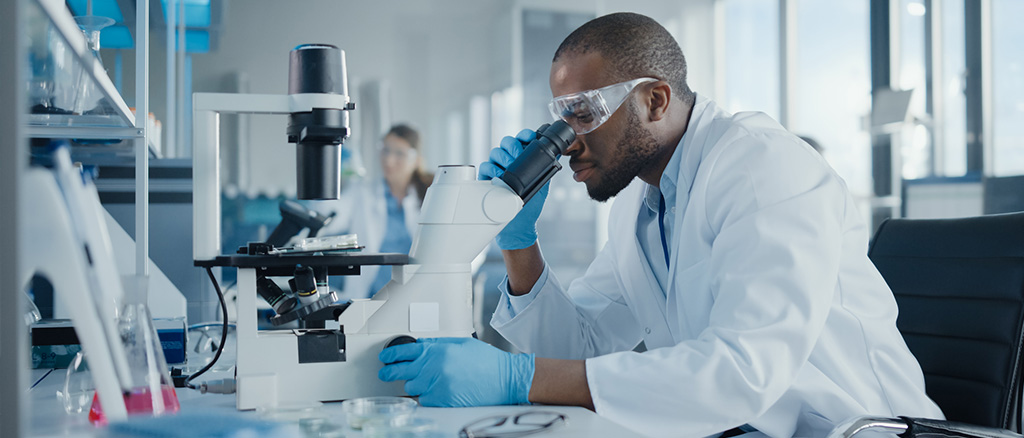Laboratories

Check out our free Buyer’s Guide and learn how low or fluctuating humidity can negatively affect laboratories.
In the United States alone, there are more than 7 billion lab tests performed annually.1 Controlling the relative humidity (RH) within the complex environment of a laboratory generates more accurate test results, prevents contamination, and promotes a healthier work environment for staff.
A primary concern is the prevention of contamination; the potential for the growth of microbes and bacteria increases in an improperly controlled environment. When humidity levels are too low, the potential for static buildup increases, allowing contaminants to collect. In unfavorable conditions, microbes and bacteria reproduce at an exponential rate. This not only impacts testing results but also diminishes the life cycle of expensive equipment.
In the United States, there are over 500,000 workers employed in laboratories.2 Relative humidity not only creates a more comfortable environment for workers but also reduces the spread of airborne viruses such as SARS-CoV-2 and the seasonal flu.
Issues caused by low or fluctuating relative humidity
Impact on testing
- Humidity levels that are too high or too low can interfere with test results.
- Whether from a brief interval when an HVAC system starts up or the season changes, the slightest fluctuation in humidity can affect the accuracy of sensitive testing.
Protection of equipment
- In an overly dry environment, there is potential for static to build up, which will allow contaminants to collect on equipment.
- In an uncontrolled environment, the life span of expensive equipment such as spectrometers and electronic microscopes can be notably reduced.
Wellness of staff
- The use of humidification can help to reduce the spread of viruses like COVID-19 (SARS-CoV-2) and seasonal influenza, helping to protect the well-being of staff.
Resources
Buyer’s Guide: Humidification for Laboratories
Learn more about how issues caused by low or fluctuating humidity levels can negatively affect a laboratory, creating the potential for inaccurate results and reducing the life span of expensive equipment.
Sources
- Value of lab testing
- Laboratories, United States Department of Labor: Occupational Safety and Health Administration
Next steps
Contact your local DriSteem representative to learn more about humidity control for laboratories. Use the Find a Rep tool below to find your nearest representative.
Connect with a humidity control expert
Already using humidity control to protect laboratories?
For best performance and highest efficiency, existing humidification systems should be checked to determine if any replacement parts are needed, if any other maintenance needs to be performed, and whether there is a software update available. Contact your local DriSteem representative to learn more.
